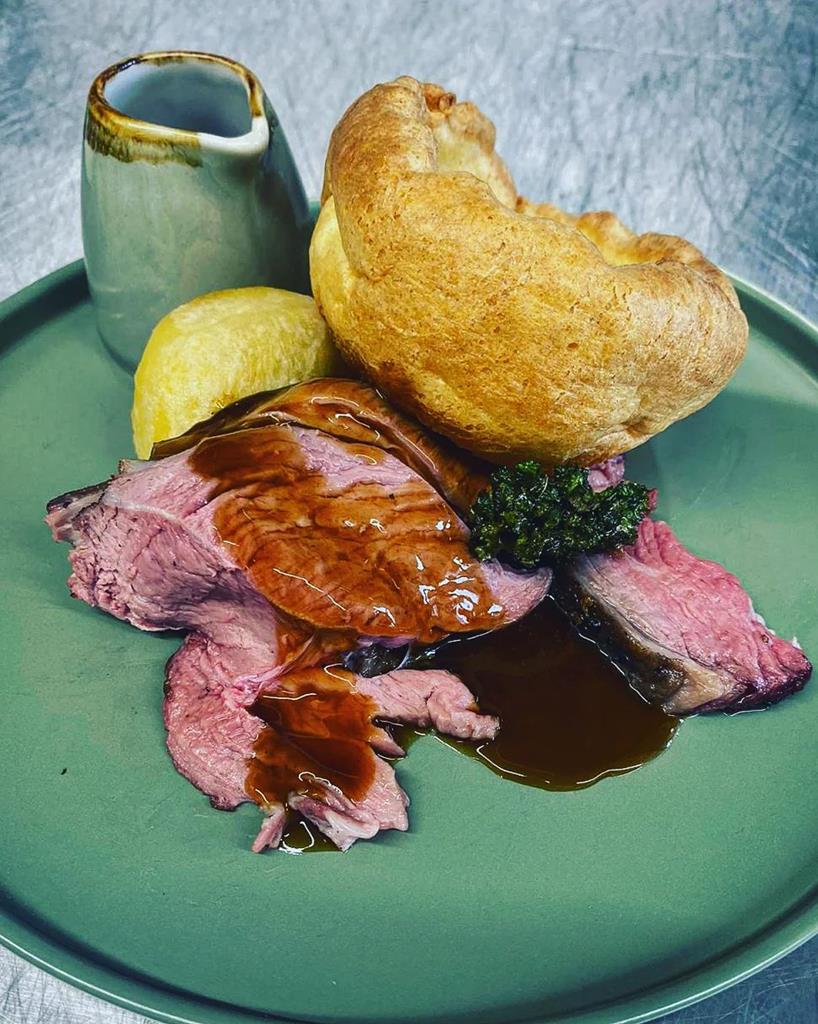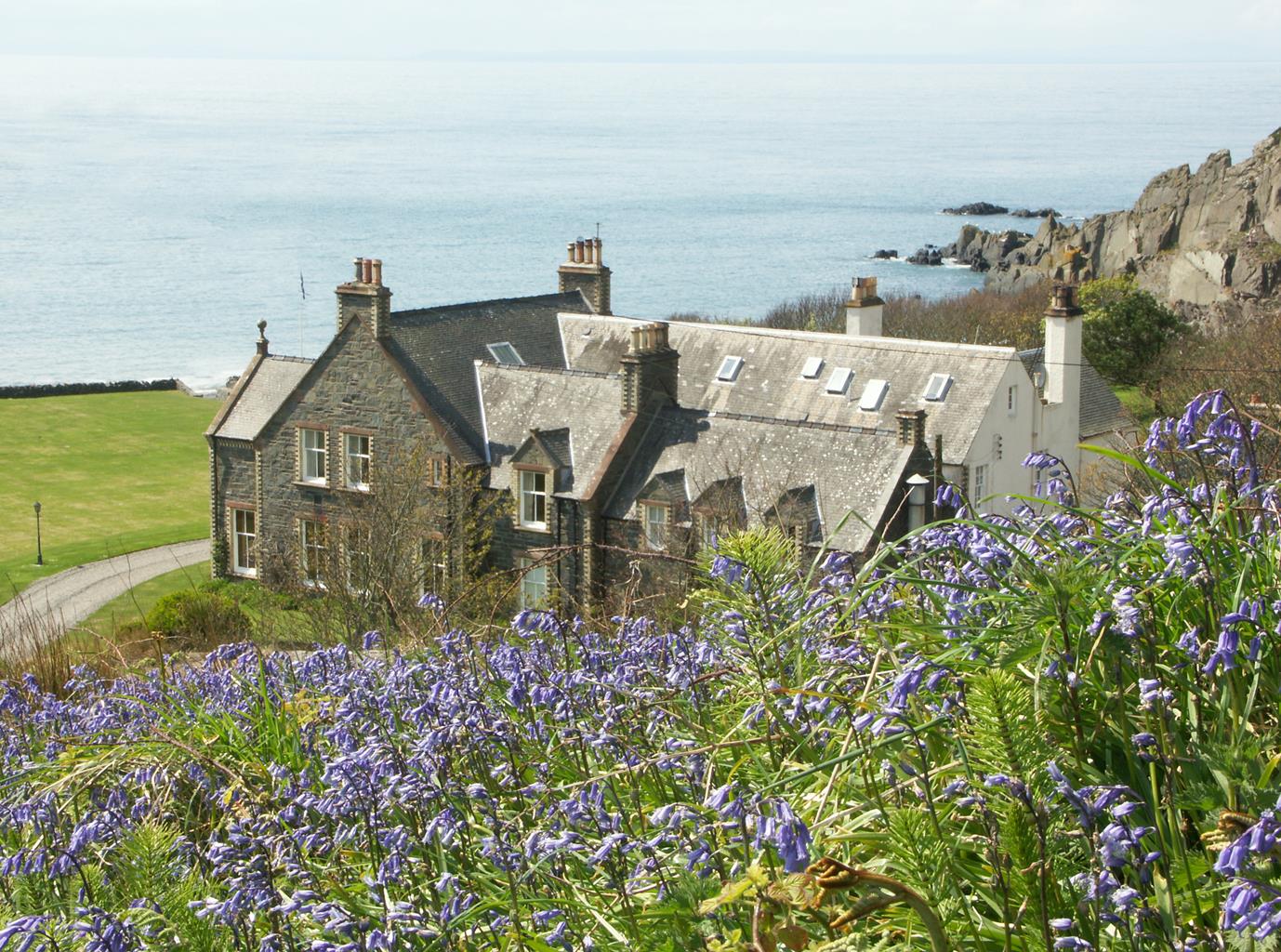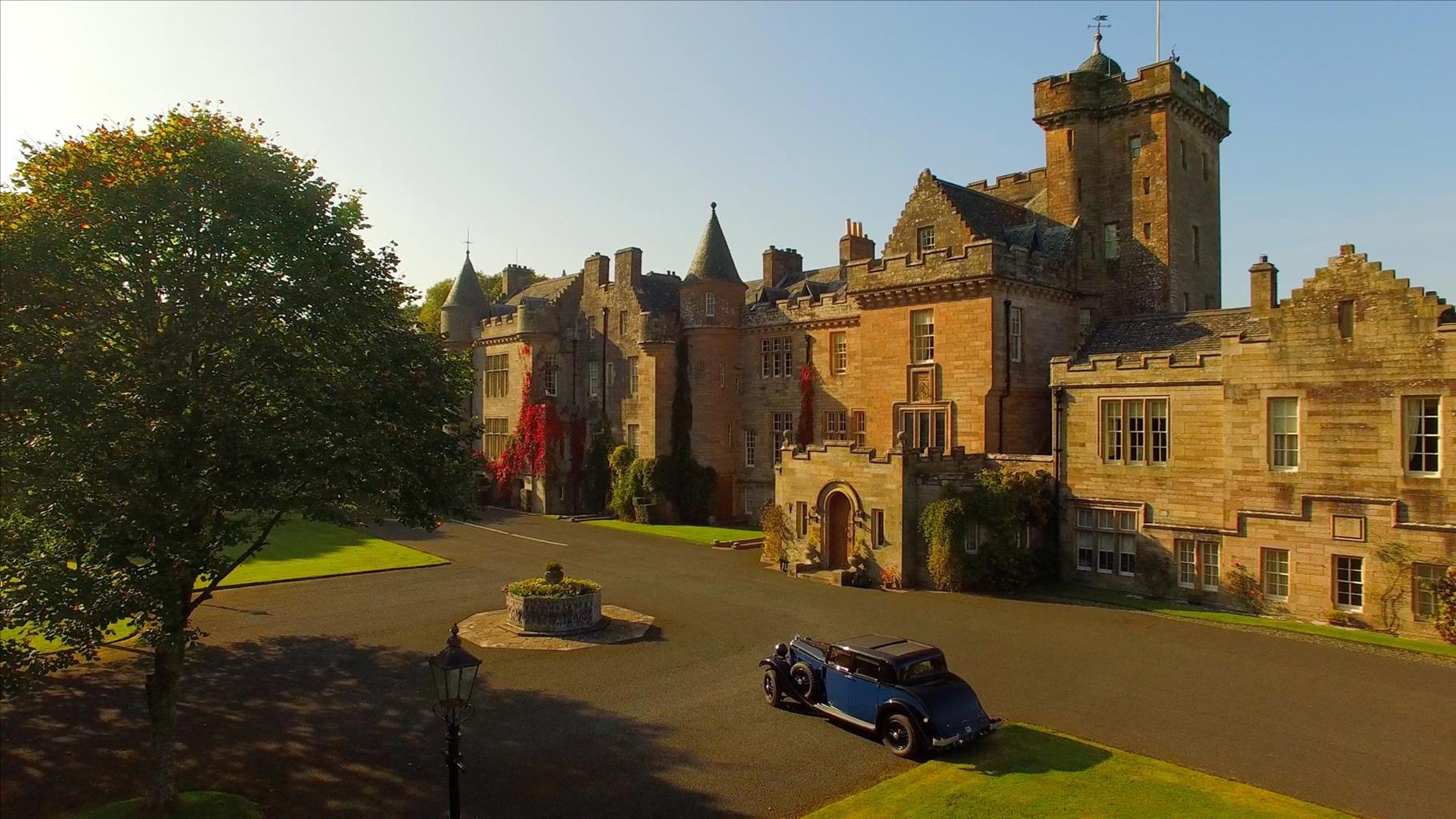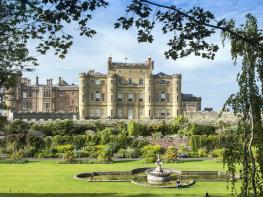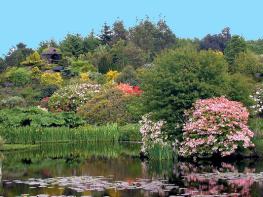A small, friendly park in a tranquil rural location, screened from the A714 by trees. The park…
Kilranny Hill and Steading

Walk on rough ground and an old coach road to a ruined and forsaken shepherd’s dwelling
3 miles (4.8kms)
About the walk
As recently as 1966 the desolate ruin of Kilranny was a warm and welcoming home for the shepherd at Ardwell Farm. The now-vanished enclosure behind the house was a hive of activity at clipping time when shepherds from the neighbouring farms would arrive to help. They were big, fit, jolly, men, those old shepherds. Each would straddle a wooden bench, the sleeves of their collarless shirts rolled up and their heavy woollen trousers held up with braces and large leather belts. When a herd finished shearing a sheep he would bellow out ‘bist’ and the farmer's son would run over with a pot of dye to brand the letter ‘A’ onto the newly shorn animal. The fleece was then expertly rolled, tied and passed to the farmer's other son who was inside a large wool sack suspended from two poles and a cross bar. He had to stand on the fleeces to pack them in and was stuck inside this sack until it was full enough to climb out. At the end of the job the farmer would arrive with a crate of beer and everyone would sit round and have a break while the shepherd's wife came out with a tray of freshly baked scones, home-made butter and jam.
For most of the rest of the year though it was a lonely life. The shepherd spent his days tramping the surrounding hills while his wife tended the vegetable plot, milked the cow and looked after the chickens, geese, guinea fowl and pig. They were close to self sufficiency as everything that was not home produced had to be carried up from the main road on the herd's back. It may have been a hard life but these old herds would often say near the end of their lives that they had had the best of it.
While it appears a remote and lonely spot today this house once stood on the main coach road to Stranraer and with the daily bustle of traffic going past or stopping to water the horses it would have been fairly sociable. All this changed when Kennedy’s Pass was blasted from the rock and the road re-routed along the coast. Nowadays it’s busy again as this is the route of the Ayrshire Coastal Path, but by the 1970s shepherds were no longer prepared to live here and the house was left to rot.
Walk directions
From the layby cross the road, go through a gate and along a farm track to the left parallel to the shore to reach a gate at a waterfall. Go over the steps beside the gate and continue on a farm track heading uphill.
When the road bends left, take the hairpin bend to the right heading uphill. Wind up this rough muddy track to a burn and a gate.
Go through the gate and turn right uphill alongside a wall and a fence to a gate and turn right across the field towards a solitary wind-blown ash tree.
Just beyond the tree, turn left through a gate and head up towards a gap in the hills called the Nick o’ the Nawin. Go through the Nick and follow a faint path over Kilranny Hill with Pinbain Hill ahead.
Continue towards a wall and turn right downhill to the old coach road, which is part of the Ayrshire Coastal Path. There is a short scramble to reach the road. Turn right heading downhill.
From here there is a glorious view over the sea and Ailsa Craig to your left and on a clear day you can see the Kintyre Peninsula and the coast of Ireland. Follow the coach road through two gates down to the ruin of Kilranny.
Go round the steading through two kissing gates and continue downhill back to the farm track to return to the layby.
Leave the ruin with its ghosts of long-gone herds and head downhill. At a hairpin bend go straight ahead along a farm track. Go through a gate near a waterfall then right on to a farm road heading uphill.
When the road forks, take the right fork uphill. At the next fork go left and follow this road, going through one gate, to its end. Now follow the edge of the woods on your left round a double horseshoe to the Crow Wood. Go through two gates here then head diagonally right across the field and uphill until you reach a wall. Follow this to the corner of the field and cross a burn to two gates at right angles. With the dry-stone wall on your left, go through the gate in front of you. Circle to the left round the foot of Mains Hill to pick up a faint path that eventually joins the farm track near the monument.
Go through a gap in the wall and head up the side of Byne Hill to reach a prominent commemorative cairn at the summit. From this vantage point there is one of the finest views of the Firth of Clyde. On a clear day you can see the Antrim coast of Northern Ireland, the island of Arran and the Mull of Kintyre to the north and west, and, about 8 miles (12.9km) out in the sea, the distinctive outline of Ailsa Craig. With the cairn at your back, walk straight ahead. Cross a saddle between the summit and the lower part of the hill, keeping at first to the higher ground then towards the north side of the hill. Descend very carefully and at the bottom, turn left and follow the wall. Continue until you pass a gate then turn right over a stile and cross the field to then go over the gate on to the farm road. From here retrace your steps to the start.
Additional information
Farm tracks, old coach road and open hillside
Sea shore, farmland and open hillsides
Sheep everywhere, essential that dogs are kept on leads at all times and not taken on this walk during the lambing season
OS Explorer 317 Ballantrae, Barr & Barrhill
Layby at the start
3 miles along the road on the shore at Girvan
WALKING IN SAFETY
Read our tips to look after yourself and the environment when following this walk.
Find out more
Also in the area
About the area
Discover South Ayrshire
With a mixture of wide sandy beaches, cliffs and rocky coves, the Ayrshire coastline looks out towards the Isles of Arran and Bute and enjoys a fine, mild climate fanned by the warm currents of the Gulf stream. Like so many parts of Scotland, Ayrshire is excellent for walking and the area is renowned for its superb championship golf courses, as well as boasting a wealth of historic landmarks to seek out, including lots of castles and ancient strongholds.
A favoured holiday resort on the Clyde coast, with its 2.5 miles (4km) of seafront esplanade, spacious gardens and parks, Ayr itself is a Royal Burgh dating back to 1202. It is also home to Scotland’s premier race course, where the Scottish Grand National is run, and, more importantly to fans of Robert Burns, the literary heart of the Burns Heritage Trail. With its modern facilities, good shopping and wealth of family outdoor recreation, it makes an excellent centre for exploring Burns country.
Nearby stays
Restaurants and Pubs
Nearby experiences
Recommended things to do
Why choose Rated Trips?
Your trusted guide to rated places across the UK
The best coverage
Discover more than 15,000 professionally rated places to stay, eat and visit from across the UK and Ireland.
Quality assured
Choose a place to stay safe in the knowledge that it has been expertly assessed by trained assessors.
Plan your next trip
Search by location or the type of place you're visiting to find your next ideal holiday experience.
Travel inspiration
Read our articles, city guides and recommended things to do for inspiration. We're here to help you explore the UK.


